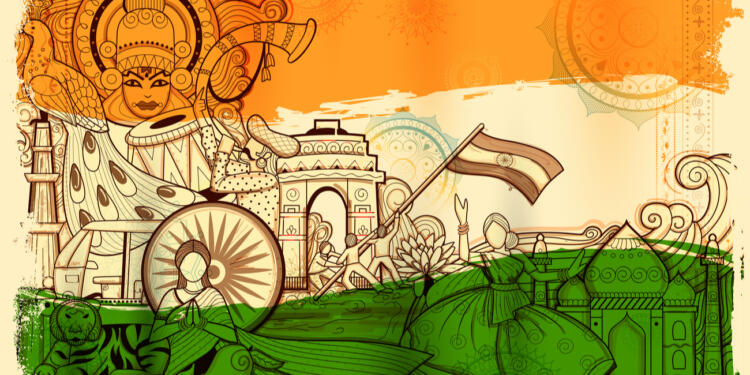
Introduction
The names “Bhaarath” and “India” hold a rich tapestry of history, culture, and identity that stretches back millennia. These two names represent the same land, but their origins, evolutions, and significance are a testament to the diverse and complex history of this vibrant subcontinent. In this article, we will delve into the fascinating story behind these names, tracing their roots and exploring how they have shaped the identity of this ancient land.
Bhaarath: The Ancient Name
The name “Bhaarath” has deep historical roots in the Indian subcontinent. Its origins can be traced back to ancient Sanskrit texts, particularly the revered Hindu epic, the Mahabharata. In the Mahabharata, “Bhaarathvarsha” or “Bhaarath” referred to the entire Indian subcontinent, encompassing what is present-day India, Pakistan, Bangladesh, and parts of Nepal.
The term “Bhaarath” is believed to have derived from the legendary King Bharata, who played a pivotal role in the narrative of the Mahabharata. King Bharata was a ruler of ancient India, known for his wisdom and just rule. Over time, the name Bharata came to symbolize the entire landmass, highlighting the significance of the Mahabharata in shaping the cultural and historical identity of the region.
India: A Name with Foreign Origins
The name “India” has more recent origins and can be traced back to the ancient Greeks. The Greek historian Herodotus is credited with coining the term “Indoi,” which referred to the people living in the region east of the Indus River. The word “India” itself is believed to have evolved from this Greek term.
During the Hellenistic period, “India” became a familiar term in Western literature and geography, representing the vast and enigmatic lands to the east. It was during this period that the world began to recognize India as a distinct and culturally rich entity.
The Arrival of the British
The name “India” gained widespread usage during the British colonial era. In 1608, when the British East India Company was established, it marked the beginning of British colonial rule in the subcontinent. The British adopted the name “India” to refer to their newly acquired territories, and it eventually became the official name of the country.
The Impact on Identity
The adoption of the name “India” by the British had a profound impact on the identity of the subcontinent. While “Bhaarath” had deep historical and cultural significance rooted in indigenous traditions, “India” represented the nation under foreign rule. This shift in nomenclature reflects the complex interplay of colonialism and identity formation in the subcontinent.
Independence and the Modern Era
On August 15, 1947, India gained independence from British colonial rule, marking a turning point in its history. With independence, there was a resurgence of interest in indigenous culture, history, and identity. Many Indians began to re-embrace the name “Bhaarath” as a symbol of their cultural heritage and a rejection of colonial nomenclature.
Today, “Bhaarath” and “India” are both used interchangeably to refer to the nation. “India” remains the official name recognized internationally, while “Bhaarath” holds a special place in the hearts of many Indians as a reminder of their ancient heritage.
Conclusion
The names “Bhaarath” and “India” are more than just labels for a geographic location; they are a reflection of the complex history, culture, and identity of the Indian subcontinent. “Bhaarath” is rooted in ancient Sanskrit texts and signifies the rich cultural heritage of the region, while “India” emerged through interactions with the outside world, particularly during the colonial era.
These names serve as a reminder of the subcontinent’s diverse and evolving history, from ancient civilizations to the struggle for independence and the modern era. Ultimately, whether one refers to it as “Bhaarath” or “India,” the essence of this land remains the same—a vibrant and culturally diverse tapestry that continues to captivate the world.